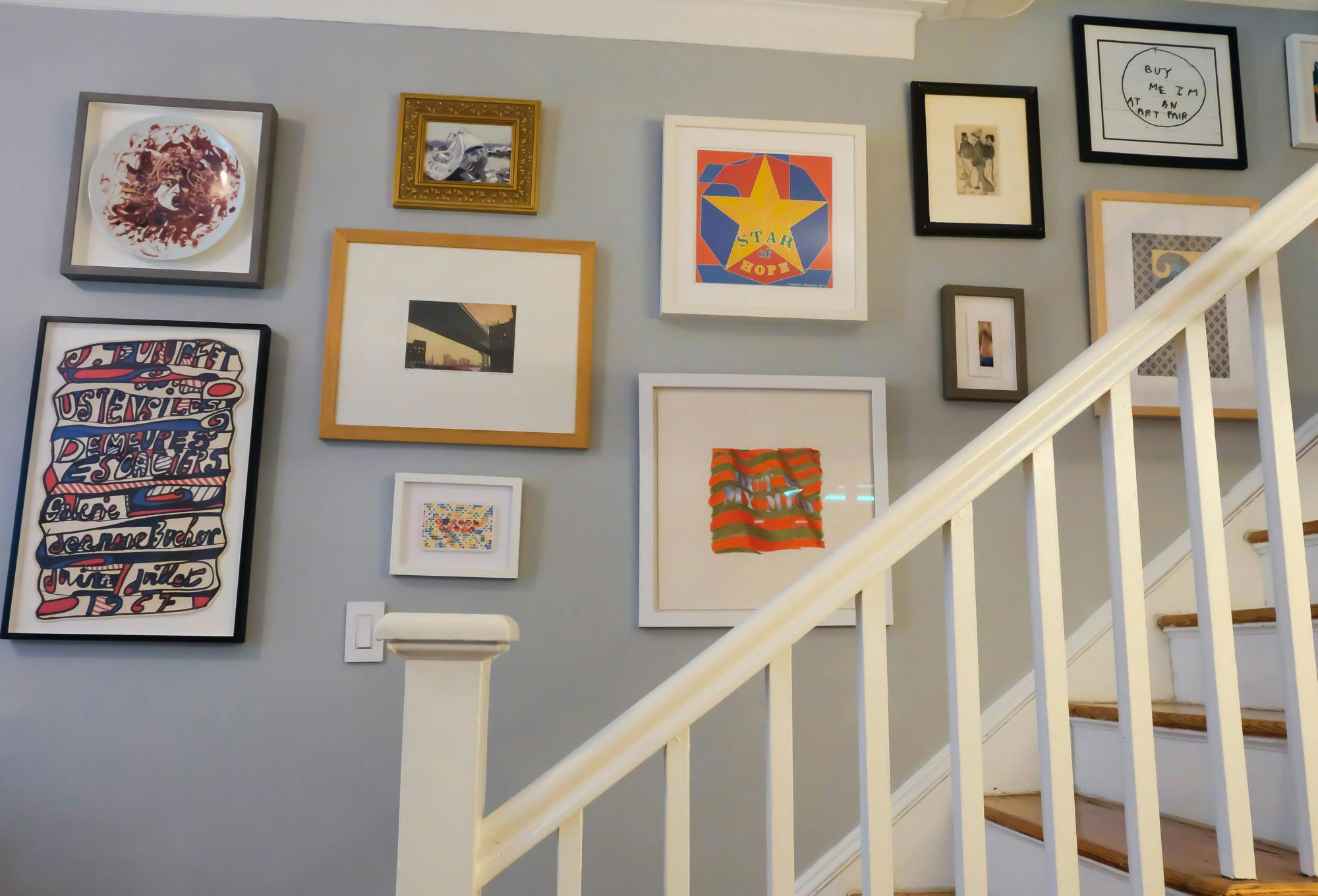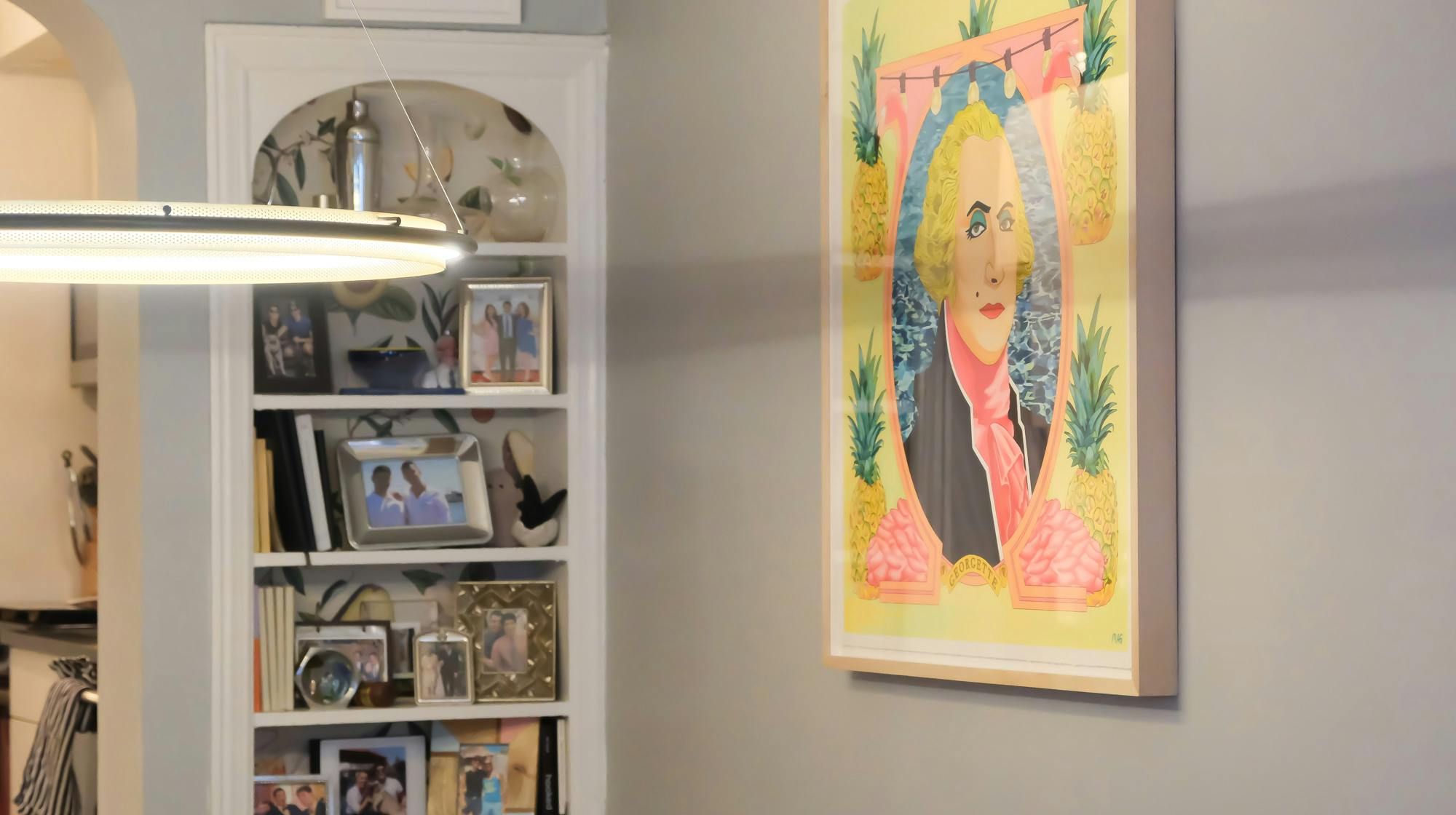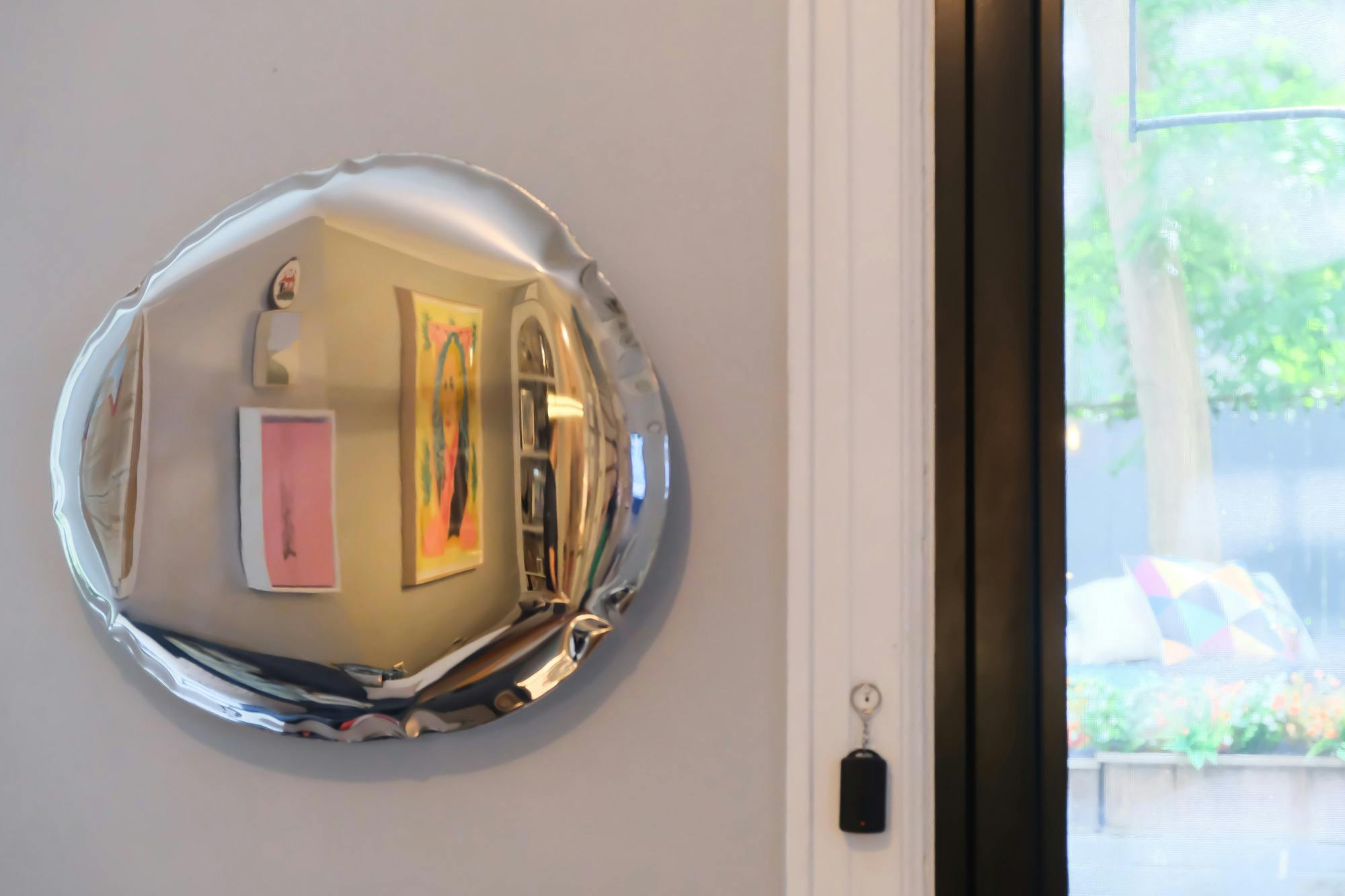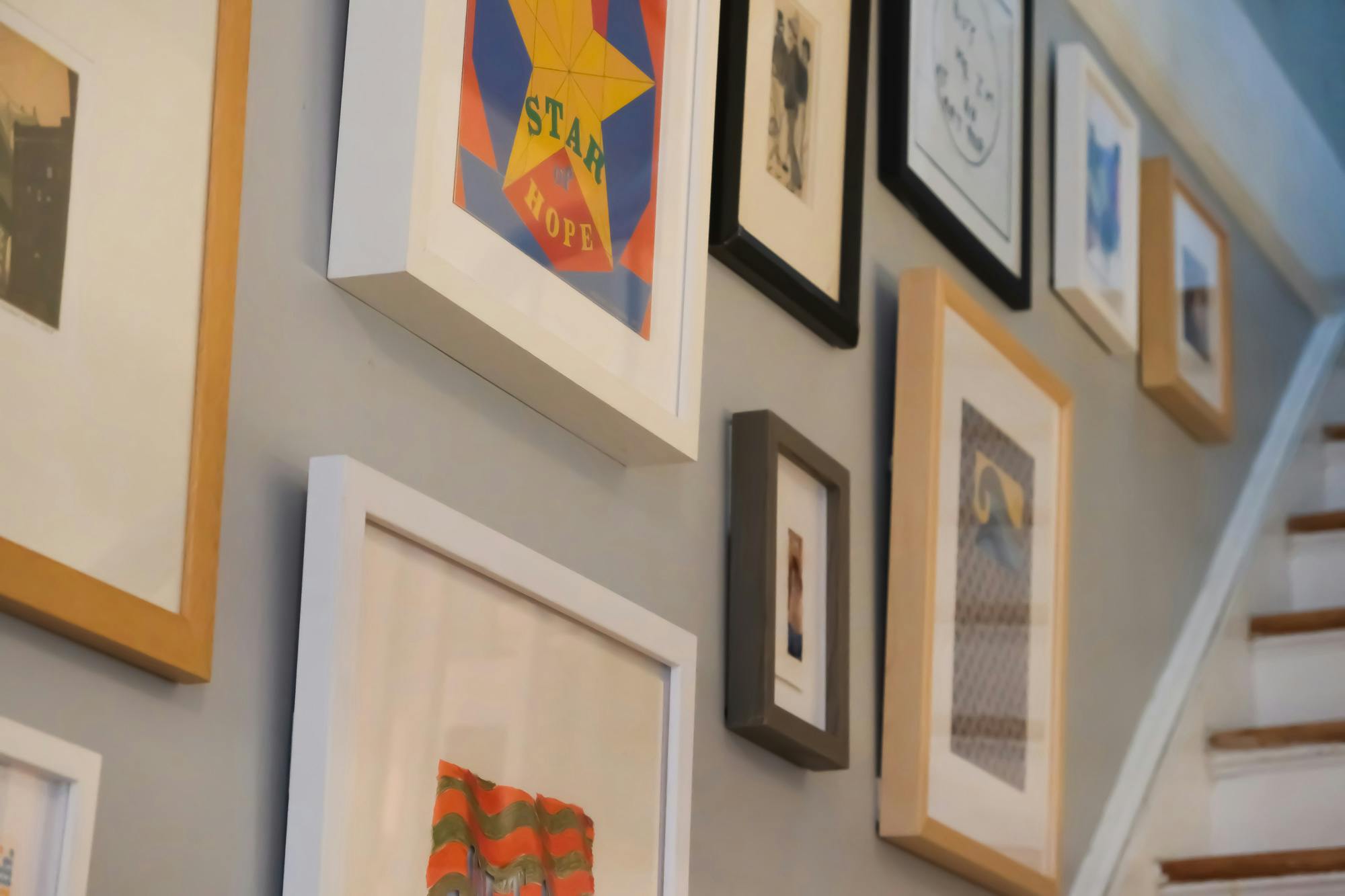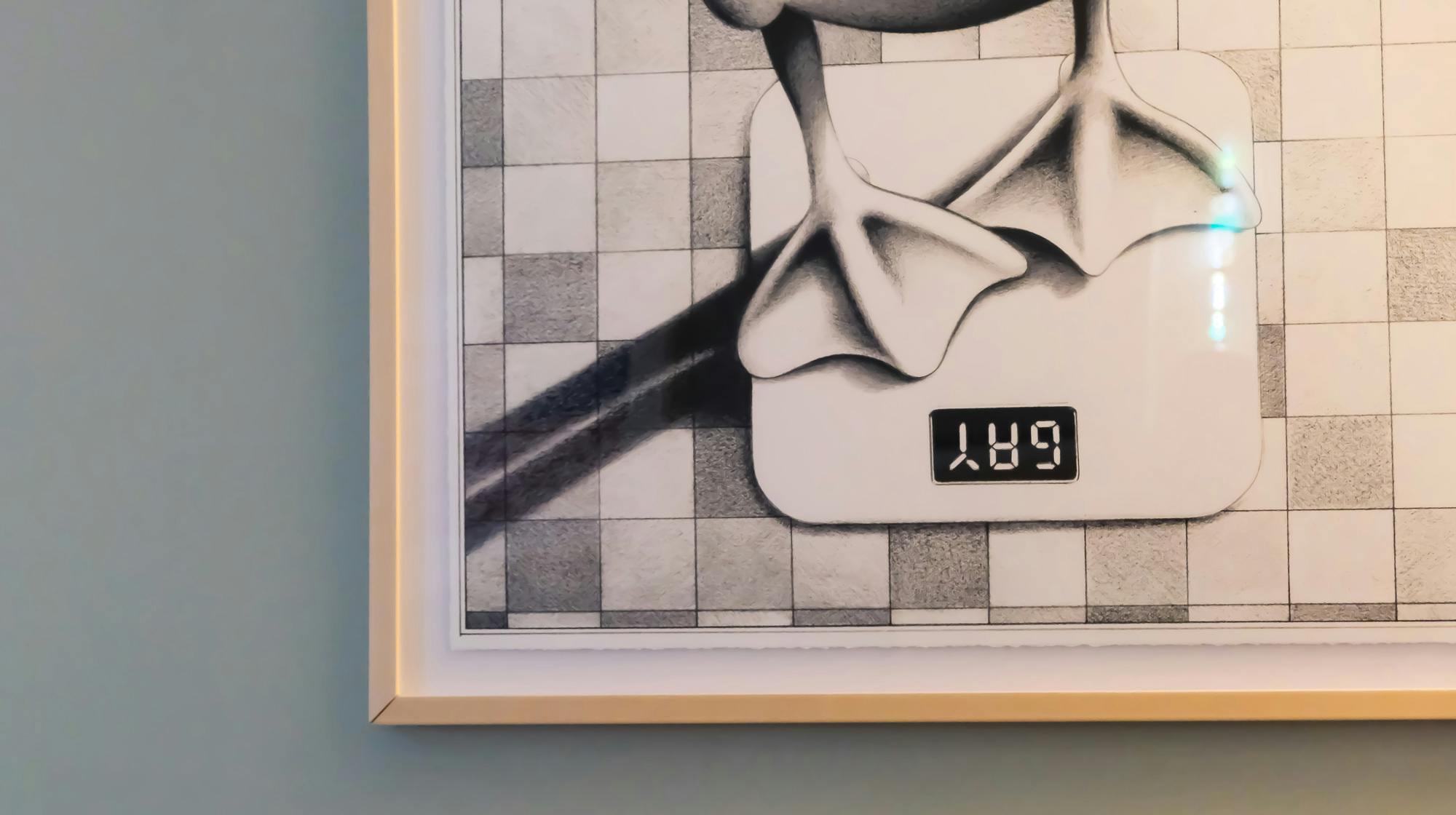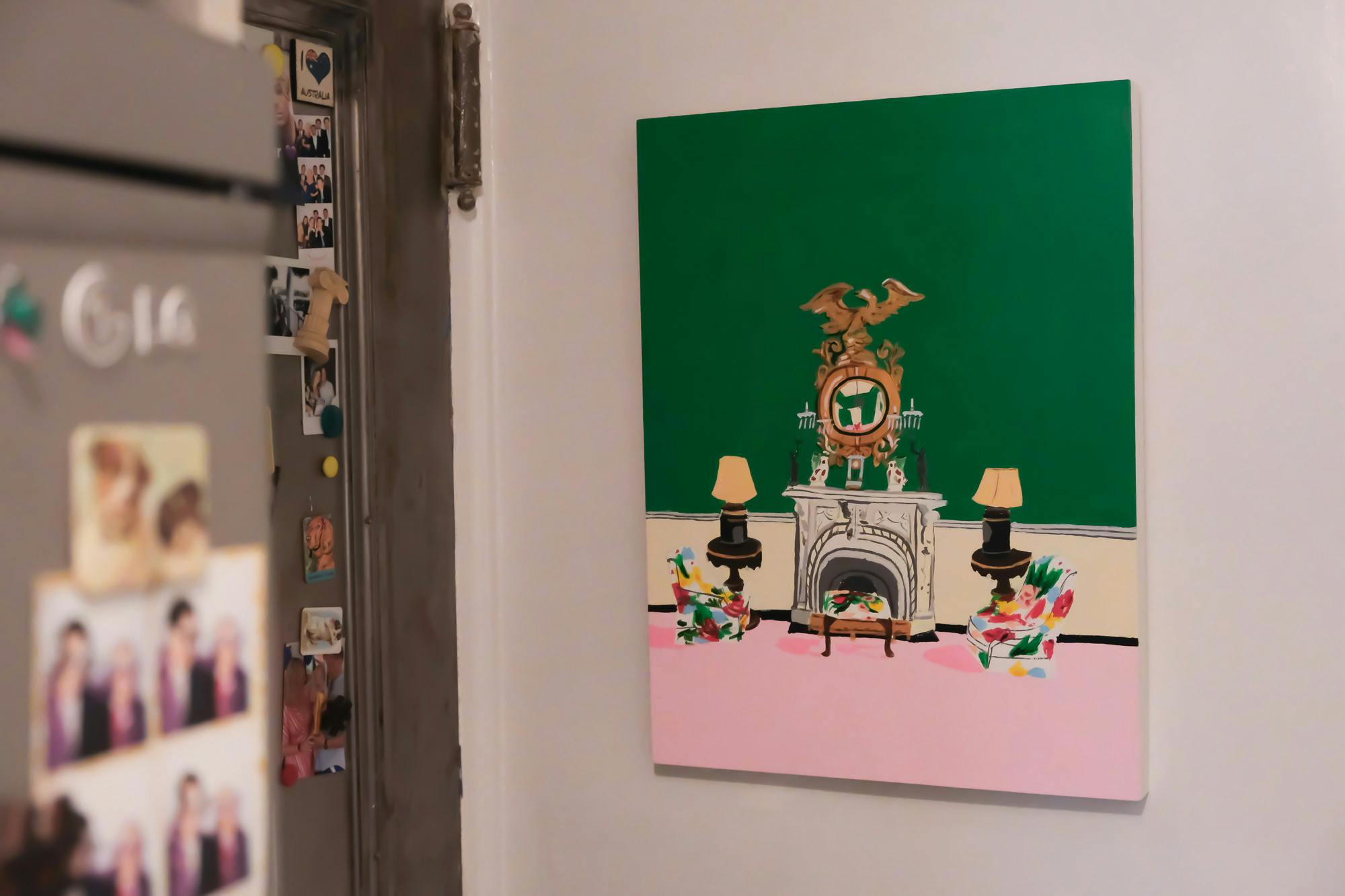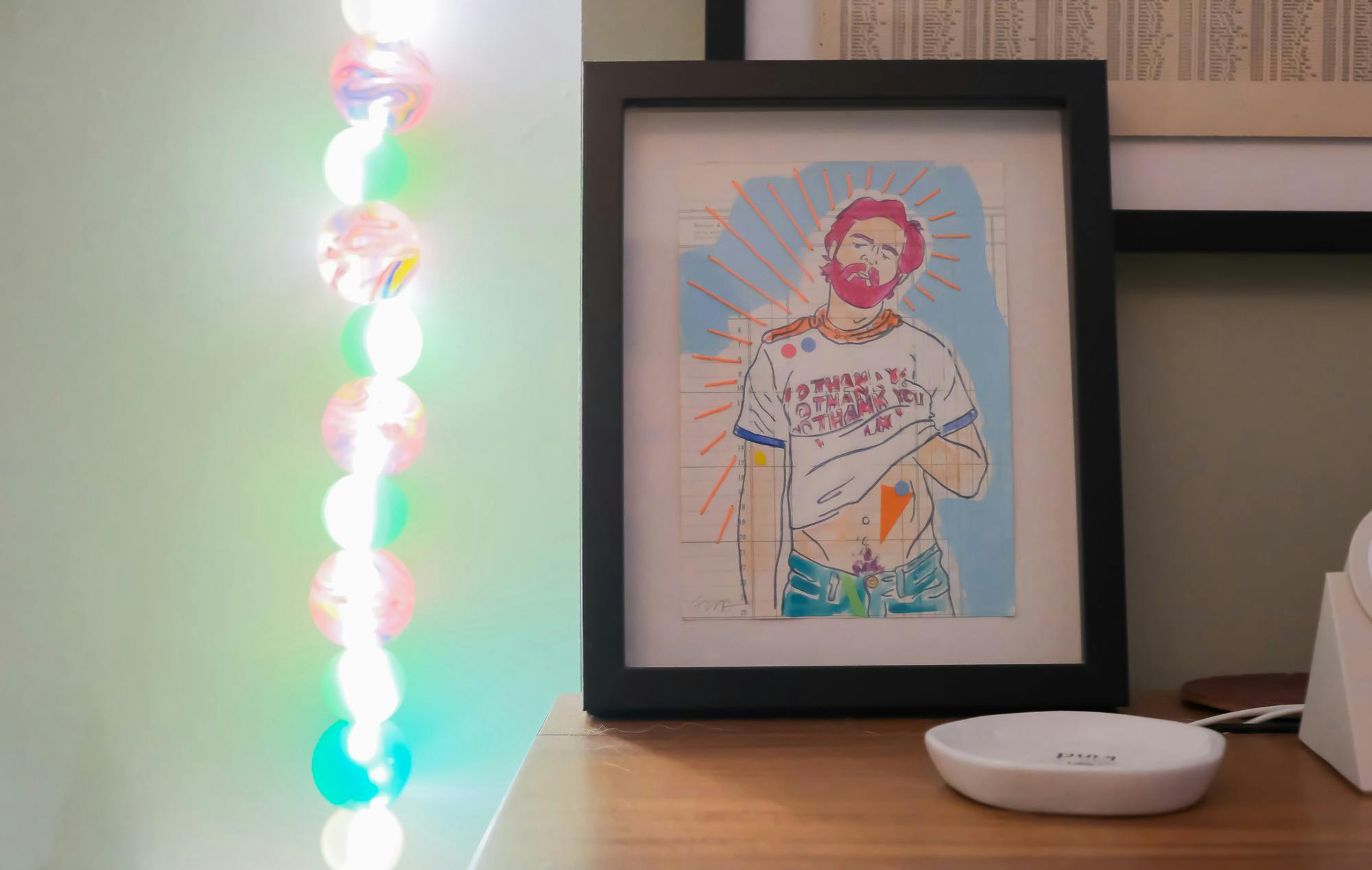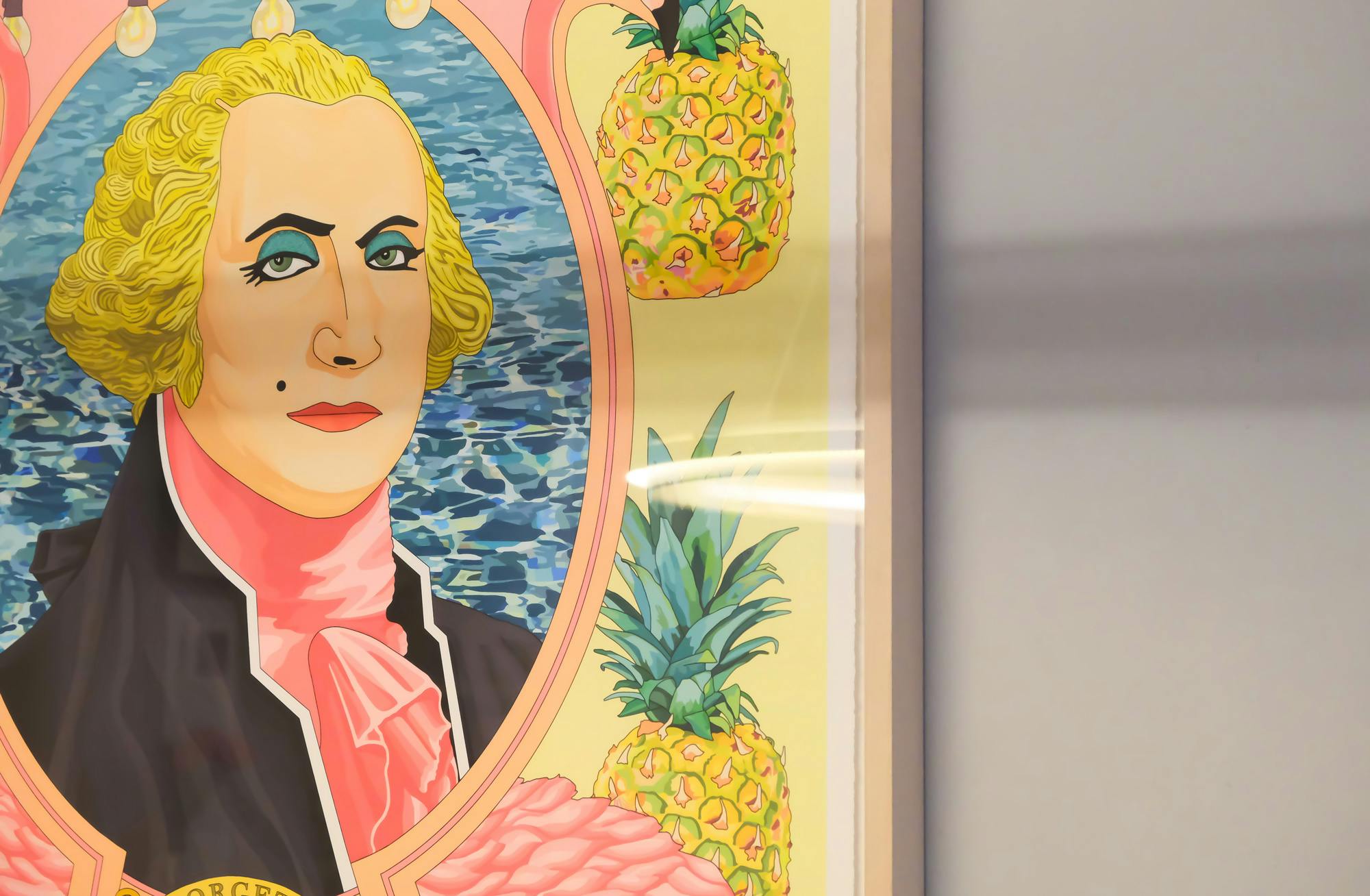Published June 23, 2023
Marc Hajjar on the Thrill of Anticipation in Collecting
Marc Hajjar has been working in the fine art, jewelry, and collectibles space for over 10 years. He previously worked in fine art at Sotheby’s and Phillips and also an appraisal and advisory firm, Winston Art Group, where he specialized not just in fine art, but any tangible asset class for insurance, estate planning, and loan collateral appraisals. Currently, Marc oversees a digital-first embedded insurance product for collectible watches at HODINKEE.
In a recent conversation, John, Testudo’s co-founder, and Marc caught up to discuss the first artwork he ever purchased and keeping an open mind in the art world.
John Dennehy: Would you share a bit about your background and experience with art?
Marc Hajjar: I’m one of those poor souls that got a bachelor's in art history and had no idea what to do with it. Plus, when you graduate college shortly after a financial crisis, there's not a lot to do. I then went on to get a master's degree in art and quickly realized that I was not cut out to be your standard curator or academic.
I didn't necessarily find that career-path enticing, so I realized that the other career option for me to remain in the art world was to go the commercial route: think auction houses, galleries, appraisal companies, and things like that. During grad school I had gotten connected to a woman at Sotheby's, who I must have harassed for a solid six months until she finally caved and said, ‘We've got an hourly-paid job. Do you want it?’ and I just took it. That was how I got into the commercial side of art.
My personal interest and collecting came through my education. At first, I also thought it was well beyond my ability to buy art, but then I realized that I can get some really nice pieces for very reasonable prices if I waited long enough, looked in the right places, and followed the right artists.
How would you describe your first experience purchasing a work of art and how do you feel about that work today?
MH: The first real piece of art I actually bought was at NADA, an art fair in Miami. It was about 10 years ago. It’s a small lithograph, probably 10” by 12”, and it had the words “BUY ME I’M AT AN ART FAIR” on it. I found it really kind of funny and an awkward social commentary on art and art fairs. So, I bought it.
I basically fell for it, and everyone made fun of me for buying it. Because of that, I'm weirdly indifferent to the piece now. I still have it up in my apartment, and I look at it every day and think, ‘why the heck did I choose to buy this?’ But you may have that relationship with many pieces; you may love it when you first buy it, but then a couple years later you change your opinion. Later perhaps you fall back in love with it again. It's a cycle.
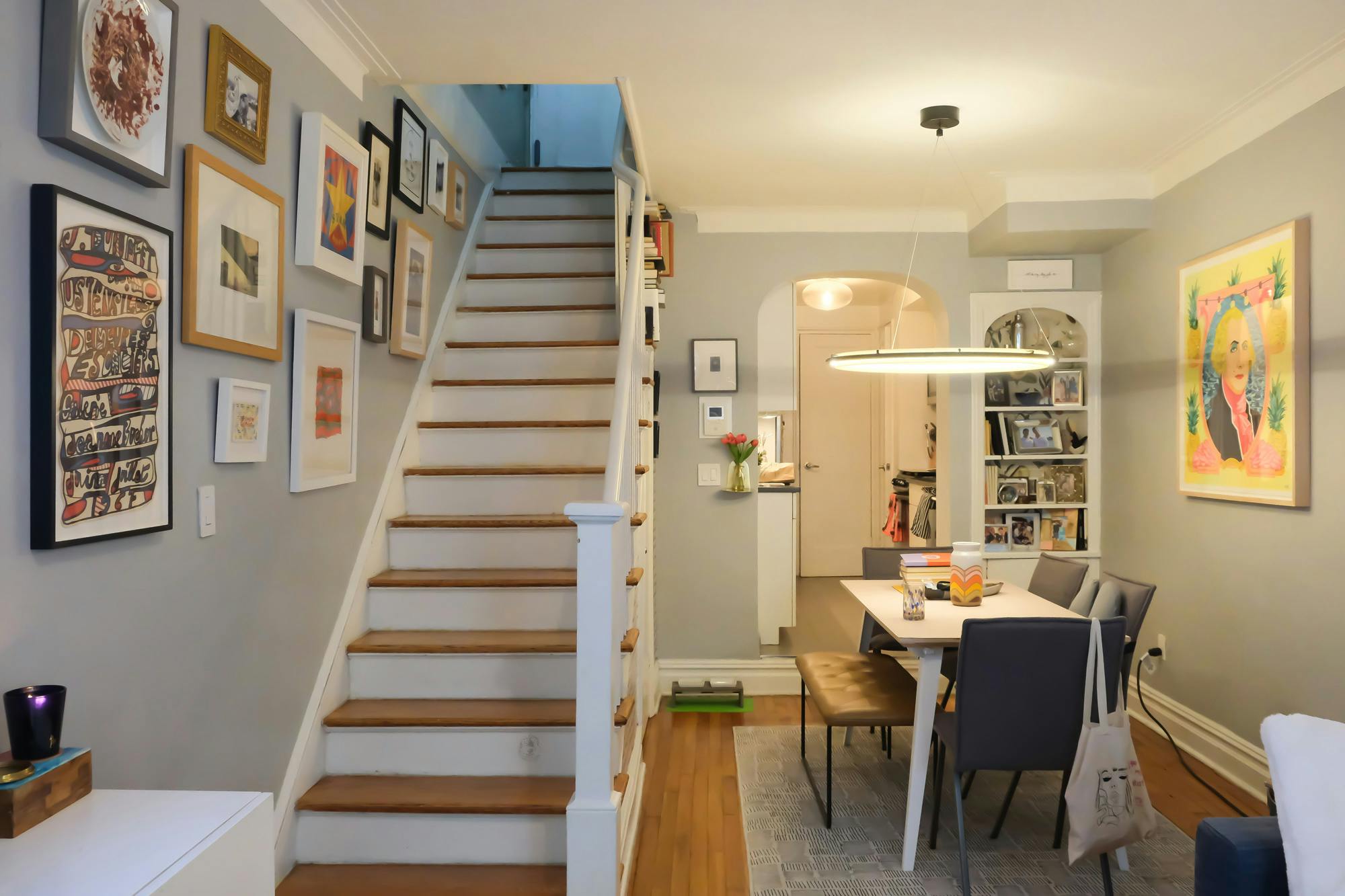
How has your advanced education in art history and your professional advisory roles influenced your approach to collecting?
MH: For me, it's removed the barrier that a lot of people feel: this level of intimidation around art. I'm not intimidated by it. I'm not afraid to say, ‘I don't understand the artist’s point they're trying to make with this piece,’ and that's okay. Sometimes you don't have to necessarily understand their point. My professional advisory roles have probably jaded me a little bit, because the lens that everyone looks through when you're dealing with an advisor is whether the work is an asset that will appreciate reliably. I can't help but still have that paradigm when I'm looking at new art.
Generally speaking, I'm able to not worry about that though. I just view collecting as if it's not going to pay me financial dividends, it will at least pay me aesthetic dividends every time I look at it.
Why do you think the art world has such a high perceived barrier to entry that doesn’t exist in other collectibles?
MH: To a certain extent, the industry itself has promoted the idea that you need to have this knowledge base to participate, and it is guarded by certain institutions. I don't necessarily think that in order to buy contemporary art you have to have that knowledge. It's definitely useful, but you don’t need to have taken art history in college to really just start collecting. All you have to do is have an open mind and not feel intimidated.
Galleries and artists absolutely want to talk about their work and for their work to be talked about even if it's not going to result in a sale. They want to educate people on why they are choosing to use this certain material or methodology. Not asking out of intimidation does every party a disservice.
I 100% support living with art. Whenever I'm bored, in a bad mood, or stuck inside because I'm sick, I look at the art. I noticed things in a work that I never noticed before and then think, ‘this has been here for years, how have I not noticed this one aspect of it?’
How would you suggest someone begin engaging with and buying art?
MH: Whenever I've had people ask me for recommendations on where to buy or what to buy, I end up directing them to either websites or art fairs that have entry-level price points. The moment someone sees a high price tag on a piece of art, they may get turned off, regardless of whether or not they find the work interesting. I tend to recommend pieces or artists at very approachable prices; you don’t need large sums of money to collect.
I find myself operating even at the price point of a couple hundred dollars. There are artists from whom I would love to buy an original piece, but originals are outside my budget. However, they'll sometimes do fundraising editions, and those opportunities are perfect. That way, I can support an artist I really enjoy, collect a work, and not break the bank.
How do you go about identifying artists whose work resonates with you? What do you look for?
MH: I don't have a tried-and-true rubric that I stick with. For me, it's all about a gut feeling: if I look at something and it resonates with me I'm probably going to buy it eventually. Very rarely do I pull the trigger quickly.
If a piece does resonate with me, I'll sit on it for a couple of days or a couple of weeks even. Then if I still keep thinking about it, I'll inevitably pull the trigger. So it's quite a lengthy process for me, and I don't have any kind of a checklist that I judge against.
Is your collection defined by any particular theme or is there any medium, subjects, periods, or genres that you particularly gravitate towards?
MH: In terms of themes in the collection, I try to support queer artists. That's not to say every artist I own is queer at all. There's a really good mix there. It’s simply a subject matter that resonates with me.
For mediums, I'm all over the place. I've come to love prints for two main reasons. First, I live in a New York apartment and my wall space is limited; prints are normally smaller in size and I can hang several on one small New York wall. The second is that I can normally get them at a price that I'm way more comfortable with.
Lately, I've gotten into ceramics. I haven't pulled the trigger on a lot of them, but there's something about the mix of the functionality and aesthetics. I've been really gravitating towards multi-taskers; an art piece and a functional object.
I'm admittedly all over the place as you can tell. Most of the stuff I collect is very contemporary by living artists, but there's a good mix of what I would call modern pieces. I've got a really cool Jean Dubuffet exhibition poster and a Joseph Stella drawing, which are very interesting.
Do you find yourself more drawn to individual pieces or do you take a more artist-first approach?
MH: Very good question. I fall victim to both. There are a lot of the times it's the former where a piece that resonates with me and I'm like ‘I don't care who the artist is, this is a piece that I want’ and then there are other times where I see what an artist does and I really like their stuff, whenever I get an opportunity to find a piece that's in my budget, I'm just gonna get it. A great example that just happened a couple of weeks ago was when the artist Anthony Cudahy released three lithographs, and I was like, ‘I gotta get one.’ I was able to snag one, and it should be shipped to me next week. Obviously his original works are wonderful but I can’t afford them.
They’re also massive most of the time!
MH: Huge! Really big. I don't have the walls for that. Anyways - the piece I got is figurative, it looks exactly like his style and I am super happy with it. I was like ‘this is perfect.’ and then another example is a fundraising print I have by Jordan Nassar. His works are generally very large and he's quite popular, and I can't afford his original works, but a fundraising piece like sure, I could do that. So it just enables me to participate in the artist's work, support them and just appreciate it.
I've certainly experienced that. To me, I love the sense of anticipation. You’ve followed an artist for a long time but can’t have their work in your home. Often those are the pieces I love the most - I really had to wait for my opportunity.
MH: I had a similar experience with the artist Liz Collins. She's based in Brooklyn, and I don't want to mislabel her practice, but she makes a lot of fiber works. While she still makes a lot of textile work, she's also transformed that into making traditional looking paintings on woven canvases. I really admire her work and have followed her for years. Two years ago, I had the opportunity to buy a really small work. I was just so excited because her large scale works are amazing, but I can't fit them in my apartment and can't afford them. I was so excited that I finally was able to get one. The smaller works that I own are akin to devotional pieces because they're at a very human scale.
Do you have a personal relationship with any of the artists in your collection?
MH: I do, and this is one reason that Instagram is wonderful because you basically can keep in touch with an artist after you purchase a work from them. I maintain a relationship with a couple of the artists post-sale. I really enjoy it. I send the pictures of the work when it arrives and when I hang it. I think they enjoy seeing where the piece is now. I definitely keep in touch with a lot of them and there are several that I’m friendly with, we go out to dinner with - it’s very interesting.
Buying art is a community builder.
The term collector can sometimes carry negative, exclusionary connotations. Is it a word you identify with?
MH: I hate the word “collector,” so much so that at my current job I wrote an article about it. As you said, it can feel exclusionary and carries with it this assumption of wealth that I don't like. “Collector” is just a noun. Instead of saying “I'm an art collector,” I prefer an emphasis on the verb instead of the noun. Alternatively, I say “I collect art.” That small change places emphasis on the act and the passion.
What's your personal relationship to living with art?
MH: For me, it's super important. I am embarrassed to admit right now that I have run out of wall space in our apartment to the point where I have paintings in the closet. I 100% support living with art. I think now I'm realizing that I need a bigger house in order to live with every piece I own. It brings me so much joy to live with this art. Whenever I'm bored, in a bad mood, or stuck inside because I'm sick or the weather sucks, I look at the art. I noticed things in a work that I never noticed before and then think, ‘this has been here for years, how have I not noticed this one aspect of it?’ These realizations kind of blow my mind sometimes.
